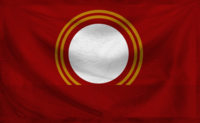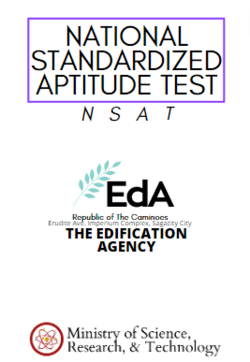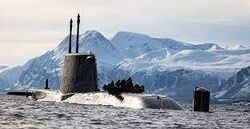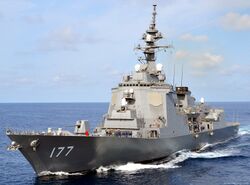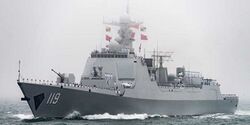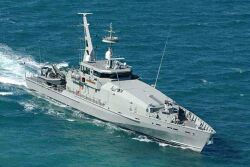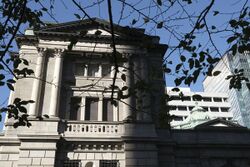Caminoes: Difference between revisions
| Line 487: | Line 487: | ||
===Manufacturing Industries=== | ===Manufacturing Industries=== | ||
===Agriculture and Fishery=== | ===Agriculture and Fishery=== | ||
Agriculture (involving fisheries, livestock, and crop output) makes up 35% of the overall GDP. Caminoes is a leading exporter of common food commodities such as; rice, sugarcane, coffee, and coconuts, and corn. | |||
The [[Ministry of Agriculture (Caminoes)|Ministry of Agriculture]] of Caminoes is tasked with the oversight on policies and regulation of industries/ | |||
===Science and Technology=== | ===Science and Technology=== | ||
===Tourism=== | ===Tourism=== | ||
===Finance Services=== | ===Finance Services=== | ||
Caminoes is renowned | Caminoes's financial sector, led by the capital Sagacity city, is renowned globally for its exceptional infrastructure and services. The Sagacity Stock Exchange (SSE), established in 1801, is one of the world's oldest and most influential stock exchanges, playing a pivotal role in international finance. Sagacity, often referred to as Caminoes' "Finance District," is a leading global financial center hosting a plethora of financial institutions including banks, investment firms, asset management companies, insurance providers, and fintech startups. The city's robust regulatory framework, skilled workforce, and strong legal system have made it a magnet for international businesses and investors. | ||
The | |||
Sagacity, often referred to as " | |||
The financial services sector in Caminoes is diverse and comprehensive, encompassing banking, asset management, insurance, and fintech. It significantly contributes to the country's GDP and employment, establishing Caminoes as a global financial hub on par with cities like New York, Hong Kong, and Tokyo. Regulatory oversight is provided by the Ministry of Finance and the Office for Financial Responsibility Oversight (Ofro), ensuring market integrity and stability. Despite its success, the sector faces challenges, including adapting to the evolving global financial landscape and accessing key international markets. Nonetheless, Caminoes's financial sector remains dynamic and vital to the nation's economy. | |||
====Central Trust Fund System==== | ====Central Trust Fund System==== | ||
The [[Central Trust Fund System]] refers to the financial infrastructure conglomerate of the five wealth funds of the country; the [[Central Fund]] corporation (referred to as 'Central'), [[Caminoes Investment Authority (CIA)]], [[Miyamoto Monetary Management]], [[Atlee Investment Corp.]], and the [[National Pension Fund (NPF)]] corporation, with the two former being sovereign wealth funds. The focuses are all mainly invested onto aspects as; national infrastructure spending and maintenance, healthcare (as per the Central Fund for the [[Central Healthcare System|CHS]]), and social services like pensions or rainy day funds. | The [[Central Trust Fund System]] refers to the financial infrastructure conglomerate of the five wealth funds of the country; the [[Central Fund]] corporation (referred to as 'Central'), [[Caminoes Investment Authority (CIA)]], [[Miyamoto Monetary Management]], [[Atlee Investment Corp.]], and the [[National Pension Fund (NPF)]] corporation, with the two former being sovereign wealth funds. The focuses are all mainly invested onto aspects as; national infrastructure spending and maintenance, healthcare (as per the Central Fund for the [[Central Healthcare System|CHS]]), and social services like pensions or rainy day funds. | ||
Revision as of 17:59, 31 May 2024
This article is incomplete because it is pending further input from participants, or it is a work-in-progress by one author. Please comment on this article's talk page to share your input, comments and questions. Note: To contribute to this article, you may need to seek help from the author(s) of this page. |
The Federal Republic of Caminoes Kamīno renpō kyōwakoku | |
|---|---|
| Motto: "Kazoku no tame ni sarani ōku no, soshite atarashī koto o""For more, and new, for family" | |
| Anthem: Yoru wa kuraku, jimen wa samui Dark Is The Night, Cold Is The Ground a | |
| Capital | Sagacity |
| Largest city | Ianua City |
| Official languages | |
| Ethnic groups |
|
| Demonym(s) | Caminoan |
| Government | Federal Parliamentary Republic |
| Inna Anton Maradona | |
| Jamie Whitley | |
| Legislature | Kaminoa Dieta |
| Area | |
• Total | 783,356 km2 (302,455 sq mi) |
| Population | |
• July 2023 estimate | 51,987,056 |
• Density | 289.7/km2 (750.3/sq mi) (167th) |
| GDP (PPP) | 2023 estimate |
• Total | 1.051 trillion |
• Per capita | $30,144 |
| GDP (nominal) | 2023 estimate |
• Total | $25.759 billion |
• Per capita | $32,144 |
| Gini (2023) | 51.6 high |
| HDI (2023) | very high |
| Currency | Caminoan Dollar (CMD) |
| Time zone | UTC+1 (CCT) |
• Summer (DST) | UTC+1 (not observed) |
| Driving side | left |
| Calling code | +237 |
| Internet TLD | .cm |
| |
The Caminoes (officially The Federal Republic of Caminoes) is a country with a population of 51,987,056 Caminoans, with which 70% live within the Sagacity Metropolitan Area (SMA), the nation's capital region sector. Other major cities include, Ianua, Elefant, Hanoma, Nakoma, Ektupan, Oepaia, Eleventh, and Daminoa.
The Caminoes's southwestern border is formed by the Kamino Bay with its southeastern border meets with the Gabriel Sea, the northwestern is a land border while the northeast is formed by neighboring countries such as Tiqal and Shariati extending all the way up to its northside with Vorrica.
The population's huge sum is majorily contributed from Ianua, reinforced by a huge bulk of the various population from neighboring countries on the Caminoes's north immigrating towards the country, making the country more populous than it it otherwise had been. Ianua (colloquially referred to as the "border city") being the nearest urabn area relative to the borders of its northern neighbours became the largest city in Caminoes for this very reason.
This has been the largest contentious issue in Caminoan society and politics, as the inclusion of immigrants, refugees, and informal settlers into Caminoan society are notably complicated in its process, however most supporters who are more keen for laxer immigration policies posit the very plethora and availability of manpower through people has built up the foundations of the Caminoan economy and helped the nation build its industrial backbone through the late 70's and the mid 80', this approach has led to arguments against them of hypocrisy and misguided intentions, as it insinuates a conditional acceptance and inclusion of immigrants into Caminoan society where economic prospects are viewed more significant, another factor that is historically proven throughout the industrialization of the Caminoes.
Etymology
History
Geography, Climate, and Environment
Administrative Divisions
Caminoes is divided into 6 states, 1 special state, and 45 prefectures.
| [[|thumb|center|upright=1.3|Prefectures of Caminoes with colored regions]] |
1. Kininogawa |
|
8. Ianua |
15. Shiganshina |
|
24. Todojo |
31. Nunavut |
36. Nakoma |
Demographics
Education
Education for primary, secondary, and tertiary levels is mostly supported by the state. A centralized administration, the Ministry of Education, Culture, and Sports (formerly the Edification Agency, EdA) oversees the process for the education of children from kindergarten to the third and final year of high school. The school year is divided into two semesters, the first of which begins at the beginning of March and ends in mid-July, the second of which begins in late August and ends in mid-February. The schedules are not uniformly standardized and vary from school to school. According to the National Edification Charter of 1934, compulsory education in Caminoes comprises elementary and junior high school, which together last for nine years. Almost all children continue their education at a three-year senior high school. English is the language of instruction in all public schools, and all subjects are taught and examined in English except for the "mother tongue" language paper. While the term "mother tongue" in general refers to the first language internationally, in Caminoes's education system, it is used to refer to the second language, as English is the first language. This has prmpted many academias to debate on the significant imapact this decisio has on cultural integrity, as per the recent Bring Back Culture bill of 2023, by the education minister himself, Ibn Khalud MP.
The seven top-ranking universities in Caminoes are; (ordered accordingly) The National University of the Caminoes (NUC), Sagacity University (SU), The University of Hanoma, The Scientific, Academic, and Technological Institution Of Caminoes SATIC , Caminoes University (CU), Caminoes Institute of Science and Technology (CamTech), and Nakoma University. Often regarded as "The Supreme Seven" of institutions for college education in the country, acquiring a combined estimate of %95 of the Caminoan youth demographic applying.
The National Standardized Aptitude Test or NSAT, is one of the most notorious college entrance examinations in the world with a passing rate of 47%. There is a cultural milieu surrounding the examinations with most municipalities and cities of testing centers imposing strict curfews, liquor bans, restrictions on night-life commercial activities, and flight re-directions avoiding any and all sorts of distractors.
.
Language
Religion
Healthcare
Caminoes is renowned for its comprehensive national healthcare system, headed by the Ministry of Health and Humanity, with universal healthcare anchored by the Central Healthcare System (CHS). The country's healthcare system has garnered acclaim for its commitment to providing excellent quality care to its citizens. With a focus on accessibility, affordability, and high standards, Caminoes has established itself as a model of excellence in healthcare.
Financial protection is a hallmark of the healthcare system in Caminoes. The government has implemented measures to ensure that healthcare services are affordable and that individuals and families are shielded from excessive financial burdens related to medical expenses. Insurance coverage, subsidies, and a progressive fee structure are among the mechanisms in place to safeguard individuals from incurring substantial out-of-pocket costs when seeking healthcare services.
Caminoes' healthcare system fosters a culture of innovation and research. Investment in medical research and technological advancements ensures that healthcare professionals are equipped with the latest knowledge and tools to provide cutting-edge care. This dedication to innovation enables the healthcare system to continuously improve and offer state-of-the-art treatments and interventions to patients.
The Caminoan healthcare system, with the Central Healthcare System at its core, is distinguished by its commitment to quality, accessibility, affordability, preventive care, and innovation. The system's emphasis on excellence, combined with its efforts to make healthcare services accessible to all, underscores its commitment to the well-being of the population.
The CHS
 The Central Healthcare System was established during the Sonning administration, after the backlash from the public over the ineffective response during the 2001 Outbreak, resulting in many casualties. This also marks a highpoint in popularity by former Prime Minister Teodor Sonning, as he seeked to revolutionize and streamline the heathcare system. |
The Central Healthcare System in Caminoes stands as a shining example of a comprehensive and high-quality national healthcare system. Committed to ensuring the well-being of its citizens, the system provides a wide range of services that promote access, affordability, and excellence in healthcare. With a focus on delivering top-notch medical care, the Central Healthcare System of Caminoes offers numerous advantages that contribute to its reputation as an objectively exceptional healthcare system.
One of the defining features of the Central Healthcare System is its commitment to universal access. Regardless of socioeconomic status, every citizen of Caminoes is entitled to receive quality healthcare services. This inclusivity ensures that no individual is left behind and that everyone has an equal opportunity to benefit from the system's resources and expertise.
The healthcare system of Caminoes also boasts an extensive network of medical facilities, including state-of-the-art hospitals, clinics, and specialized treatment centers. Equipped with modern technology and staffed by highly skilled healthcare professionals, these facilities provide cutting-edge diagnostics, treatments, and interventions. Patients can expect to receive the best available medical care, backed by the latest advancements in the field.
Another noteworthy aspect of the Central Healthcare System is its emphasis on preventive care and health promotion. The system recognizes the importance of early intervention and proactive measures to maintain and enhance population health. Through comprehensive health education campaigns, regular check-ups, and preventive screenings, individuals are empowered to take control of their well-being, leading to better overall health outcomes for the population.
Caminoes' healthcare system also shines in terms of affordability and financial protection. The government has implemented robust policies to ensure that healthcare services remain affordable and accessible to all. Various mechanisms, such as insurance schemes and subsidies, help alleviate the financial burden of healthcare expenses, ensuring that individuals can seek necessary medical care without facing undue financial hardship.
Moreover, the Central Healthcare System places a strong emphasis on research and innovation. Ongoing investments in medical research and the development of new treatment modalities enable the system to stay at the forefront of medical advancements. This dedication to innovation fosters continuous improvement, allowing healthcare professionals to deliver state-of-the-art care and offer the latest therapeutic options to patients.
Foreign Relations
Military
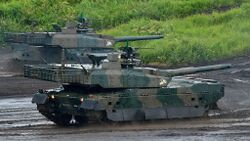 The H4 - Gouger (GH-4) is the main battle tank developed in Caminoes designed by the Ministry of Defence and built by Sakesh Heavy Industries |
The volunteer Caminoes Armed Forces (CAF), divided into the four main branches; the Federal Republic of Caminoes Army (FRCA), the Federal Republic of Caminoes Navy (FRCN), and the Federal Republic of Caminoes Air Force (FRCAF), and the Federal Republic of Caminoes Marine Corps (FRCMC). Civilian security is handled by the Federal Police Service under the Office of State. The CAF had a total manpower of around 210,000 as of 2022, of which 110,000 were active military personnel, 60,000 were reserves, and 40,000 were paramilitaries.
Major military development in the Caminoes only ever started during the early 1950's as a result of the Jue-Dui Administration's major militarization doctrine. This included significant restructuring of the military chain of command as well as the modernization and procurement of vast amoutns of new military hardware. In lieu of this the Military Public-Private Cooperation Pact energized the investment for private companies to develop the domestic capacity for manufacturing military hardware, utilities, and vehicles.
The Caminoan Army has 1,200 tanks in operation, including the C2 Mammoth and H4 Gouger, which form the backbone of the Caminoan army's mechanized armor and infantry forces. A sizable arsenal of many artillery systems, including 1,200 self-propelled C66 and C10 War-Horn howitzers and 610 helicopters and UAVs of numerous types, are assembled to provide additional fire, reconnaissance, and logistics support. The Caminoes's smaller but more advanced artillery force and wide range of airborne reconnaissance platforms are pivotal in the counter-battery suppression of any impending external attacks, mainly missiles from Terrorist forces.
Nowak Heavy Industries (NHI), Sakesh Heavy Industries (SHI), Caminoes Shipbuilding & Offshore Engineering (CSOE) are the big three in the shipbuilding industry as they are approached as private partners most commonly by the Caminoan government. In 2022 the estimate tax cuts and investments provided by the government to their private partnerships amounted to CM$94 bil. with a further estimate by the Caminoan Ministry of Defence amounting to an additional CM$24 bil. summed up to a CM$118 billion total. The latest addition into the fleet, the new CS Kiyoko Shimizu of the Kiyoko class, the very first helicopter carrier for the Caminoan navy' history, commissioned by the MOD, is set to be revealed for a public announcement by July of 2024.
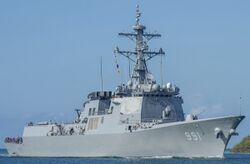 The CS Nadua Uzumaki is the lead ship of her class (Nadua Class destroyers) commissioned by the Minsitry of Defence in cooperation with Nowak heavy Industries. |
Currently the latest and most powerful battleships the Caminoan navy has; the CS Nadua Uzumaki, the CS Daria Vendela Cortés, the CS Hobokaru Nakamura, and the CS Teodor Sonning, are the strongest of the mainline battleship destoryers, used as lead for border patrol and guard groups together with ships of the; Jue Dui Class destroyers, Alvarado Class, and the Cortés Class Frigates.
Sub-Surface Vessels
| Class | Picture | Type | Ships | Displacement | |
|---|---|---|---|---|---|
| Special Operations Submarines - (8 in Service) | |||||
| Numa Type-9 Class | [[File: |250px]] | Special Operations Submarines | CUV Sophos | 3,100 tonnes | |
| Numa Type-8 Class | [[File: |250px]] | CUV Anidios | 3,000 tonnes | ||
| Class | Picture | Type | Ships | Displacement | |
| Attack Submarines - (7 in Service) | |||||
| Libero Class | 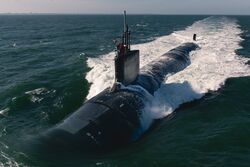
|
Attack Submarines | CUV Sea Serpent | 2,900 tonnes | |
| Daminoa Class | CUV Narwhal | 2,900 tonnes | |||
Surface Vessels
| Class | Picture | Type | Ships | Displacement | |
|---|---|---|---|---|---|
| Destroyers - DDG/DD (37 in Service) | |||||
| Nadua Class | Destroyer | CS Nadua Uzumaki | 5,500 tonnes | ||
| Saito Class | CS Nakoma City | 6,000 tonnes | |||
| Jue Dui Class | Guided missile destroyer | CS Enjo Fujiko | 9,000 tonnes | ||
| Nakadena Class | CS Nakadena | 8,500 tonnes | |||
| Class | Picture | Type | Ships | Displacement | |
| Frigate Multi-Purpose/Mine - FFM (9 in Service) | |||||
| Shoto Class | Frigate | CS Shiro Shoto | 5,500 tonnes | ||
| Fushiguro Class | CS Daria Vendela Cortés Jr. | 3600 tonnes | |||
| Class | Picture | Type | Ships | Displacement | |
| Patrol vessels (6 in Service) | |||||
| Mårdh Class Patrol Vessel | Patrol Boat | CS Mokami Dengis | 270 tonnes | ||
| Class | Picture | Type | Ships | Displacement | |
| Support Ships (3 in Service) | |||||
| Enjo Class Replenishment Oiler | Fuel Ships | CS Tochū No Enjo | 25,000 tonnes | ||
The Caminoan Navy has made its first major transformation into a blue-water navy through the formation of the Primara Fleet, which includes a battle group of, Jue Dui class-guided missile destroyers, Nakadena Class-guided missile destroyers,Cortés Class frigates, AIP Numa-Type 9 Submarines, and the Nadua class destroyers which is equipped with the latest baseline of ALLSIGHT fleet-defense system that allows the ships to track and destroy multiple cruise missiles and ballistic missiles simultaneously, forming an integral part of Caminoes's indigenous missile defense umbrella against the Terrorist force's missile threat.
The Federal Republic of Caminoes Air Force operates 350 aircraft, including several types of advanced fighters like F-9D, heavily modified CF-16C/D, and the indigenous Z-66 Crane, supported by well-maintained fleets of older fighters such as F-9C and CF-5E/F that still effectively serve the air force alongside the more modern aircraft. In an attempt to gain strength in terms of not just numbers but also modernity, the commissioning of four _____, under Project Oversight for centralized intelligence gathering and analysis on a modern battlefield, will enhance the fighters' and other support aircraft's ability to perform their missions with awareness and precision.
Economy
 Glycerin has always been a huge part of the Caminoan economic indusrty as from the early ages of civilization all the way from the Anuit to the modern day, having uses stretching from facial products to military components. |
The Caminoan economy presents a diversified base of industries ranging from agriculture to manufacturing, with the top income companies last year being the Envirocon Corp., a Sagacity-based tech company focused on innovations in the agriculture sector, whether it be through mechanical machinery or bio-chemical engineering, and the Hexagon Group, noted for owning the top three major companies (mainly manufacturers of semiconductor-related devices) focused on serving the industrial bases of the Caminoan economy, amounting to an approximate 12% of the overall GDP. Being a developed country with a high-income economy, it gives way to a highly industrialized economy and an advanced-educated labor force, all owed to the heavy incentives and government subsidization on educational institutions, making it one of the most educated countries in the Coalition, having 7 out of 10 of its citizens attaining a tertiary education degree.
There are three main ministries concerned with the economic infrastructure of the country. The Ministry of Finance, The Ministry of Economy and Work, and the Ministry of Development and National Competitiveness. They are responsible for; the fiscal infrastructure policies of government, management of income-generating assets both in public ownership or private-partnerships-as well as generating and enforcing policies for all trade industries, and the cultivation of entrepreneurship and investment on public infrastructure developments; on housing/land development, highway-railway maintenance and construction, or in transportation-related functions, respectively.
The Central System Bank acts the country's central banking infrastructure manager, being the forefront of most economic decisions by the government. It stabilizes and regulates the Caminoan financial markets conducive to economic growth.
The table consists of the largest Caminoan companies by revenue in 2018, and are cited as global contenders in the international economy.
| Rank | Name | Headquarters | Revenue (mil. $) | Profits (mil. $) | Assets (mil. $) |
|---|---|---|---|---|---|
| 1 | CSMC | Daminoa | Row 2, Column 4 | Row 2, Column 5 | Row 2, Column 6 |
| 2 | NADTSERR Co. | Sagacity | Row 3, Column 4 | Row 3, Column 5 | Row 3, Column 6 |
| 3 | Wiikinton Atticker Holdings | Sagacity | Row 4, Column 4 | Row 4, Column 5 | Row 4, Column 6 |
| 4 | Hexagon Group | Sagacity | Row 5, Column 4 | Row 5, Column 5 | Row 5, Column 6 |
| 5 | JD Atlee Gouce & Co. | Sagacity | Row 6, Column 4 | Row 6, Column 5 | Row 6, Column 6 |
| 6 | Execorp. | Sagacity | Row 7, Column 4 | Row 7, Column 5 | Row 7, Column 6 |
| 7 | First Bank of Caminoes Inc.(FBC) | Hanoma | Row 8, Column 5 | Row 8, Column 6 | |
| 8 | Rikstad Billings | Ektupan | Row 9, Column 5 | Row 9, Column 6 | |
| 9 | Core Kaminoa Co. | Ianua | Row 10, Column 5 | Row 10, Column 6 | |
| 10 | Raxxicon Energy | Daminoa | Row 11, Column 4 | Row 11, Column 5 | Row 11, Column 6 |
| 11 | Envirocon Corp. | Hanoma | Row 12, Column 4 | Row 12, Column 5 | Row 12, Column 6 |
| 12 | Row 13, Column 2 | Row 13, Column 3 | Row 13, Column 4 | Row 13, Column 5 | Row 13, Column 6 |
| 13 | Row 14, Column 2 | Row 14, Column 3 | Row 14, Column 4 | Row 14, Column 5 | Row 14, Column 6 |
Infrastructure, Energy, and Transportation
The Ministry of Development and National Competitiveness is the main agency concerned with infrastructure an dtransportation systems.
Electricity supply, production, and delivery, are entirely delegated to the private sector as per the Energy Privitisation Act of 1949. Most of the responsibility are divided into multiple companies per state, however the main national energy companies are; Sokoshi Electric corp., Nowak Energy Inc, and National Grid.
Gas and heat are relegated to the main duopoly of Kaminoa Gas, and Raxxicon Corp.
The Sector for Gas and Energy Markets (Sgem) is in charge of regulation and oversight on public market and private company mediation. The National Energy Office (NEO) runs regulatory oversight on all gas, hydro, and geothermal industries which is still under the Ministry of Energy.
Manufacturing Industries
Agriculture and Fishery
Agriculture (involving fisheries, livestock, and crop output) makes up 35% of the overall GDP. Caminoes is a leading exporter of common food commodities such as; rice, sugarcane, coffee, and coconuts, and corn.
The Ministry of Agriculture of Caminoes is tasked with the oversight on policies and regulation of industries/
Science and Technology
Tourism
Finance Services
Caminoes's financial sector, led by the capital Sagacity city, is renowned globally for its exceptional infrastructure and services. The Sagacity Stock Exchange (SSE), established in 1801, is one of the world's oldest and most influential stock exchanges, playing a pivotal role in international finance. Sagacity, often referred to as Caminoes' "Finance District," is a leading global financial center hosting a plethora of financial institutions including banks, investment firms, asset management companies, insurance providers, and fintech startups. The city's robust regulatory framework, skilled workforce, and strong legal system have made it a magnet for international businesses and investors.
The financial services sector in Caminoes is diverse and comprehensive, encompassing banking, asset management, insurance, and fintech. It significantly contributes to the country's GDP and employment, establishing Caminoes as a global financial hub on par with cities like New York, Hong Kong, and Tokyo. Regulatory oversight is provided by the Ministry of Finance and the Office for Financial Responsibility Oversight (Ofro), ensuring market integrity and stability. Despite its success, the sector faces challenges, including adapting to the evolving global financial landscape and accessing key international markets. Nonetheless, Caminoes's financial sector remains dynamic and vital to the nation's economy.
Central Trust Fund System
The Central Trust Fund System refers to the financial infrastructure conglomerate of the five wealth funds of the country; the Central Fund corporation (referred to as 'Central'), Caminoes Investment Authority (CIA), Miyamoto Monetary Management, Atlee Investment Corp., and the National Pension Fund (NPF) corporation, with the two former being sovereign wealth funds. The focuses are all mainly invested onto aspects as; national infrastructure spending and maintenance, healthcare (as per the Central Fund for the CHS), and social services like pensions or rainy day funds.
The capital from the national wealth funds are from either national banks, such as the FBC, or private sector equities such as for Miyamoto and Atlee.
Science and Technology
Ministry of Science and Research is the government department concerning the national agenda on scientific matters. They oversee and regulate the subordinate agencies of for research, innovation development, and disaster response. Some of the significant subordinate agencies are; Caminoan Space Agency (CSA), National Disaster Research Agency (NDRA), Caminoan Federal Seismology Institute CSI, DNA Research Corp., National Advanced Research for Technological Strategies Agency (NARTSA) (interagency with Ministry of Defence)
Culture and Society
Caminoan culture varies from the demographic south and north. Northern Caminoes tend to exhibit influence from neigbouring countries its sharing its borders with, influenced mainly through its influx of immigrants, creating a melting pot of varied cultures. Southern Caminoes tend to have a more recognizably tradtional Caminoan way of life as exemplified by its geographical closeness to the colder arctic regions under, mainly inhabited by the indigenous Anuit peoples influencing culture and tradition.
Arts
Architecture
Cuisine
The Caminoes offers a variety of flavourful regional Sinospheric specialties. Aside from rice and noodles being traditional and common staples, seafood is a huge component of the common Caminoan diet - the absence of arable land pushed much of food gathering towards bodies of water. The climate of the country certainly impacts food ingredients and recipes; namely, Odani (south) soup and Rashemon (north) are cultural and national icons in the native cuisine.
Food from the Caminoan North and the Caminoan South vary in terms of ingredients, and method of cooking. Desert are composed of sticky rice ingredients referred to as Shuchjin.
Popular Culture
Politics
Main Article: Caminoan Politics
Government
The Government of Caminoes is headed by the Prime Minister through the Office of Cabinet and General Affairs. The government ministers are appointed by them and answer to parliament along with the Prime Minister.

Cabinet
| Ministry | Title | Minister/Chancellor | Tenure | Political Party |
|---|---|---|---|---|
 Office of Cabinet and General Affairs Office of Cabinet and General Affairs
|
Prime Minister |  Lilja Oba MP |
2024-present | Moderate |
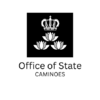 Home Office Home Office
|
Home Secretary |  Roma Atani MP |
2024-present | Moderate |
 Ministry of Energy Ministry of Energy
|
Energy Minister |  Sara Halima Al-Amin MP |
2024-present | Moderates |
 Ministry of Finance Ministry of Finance
|
Chancellor of Finance |  Elizabeth Kissinger MP |
2024-present | Moderate |
 Ministry of Economy and Work Ministry of Economy and Work
|
Chancellor of the Economy |  Sanae Takaichi MP |
2024-present | Moderate |
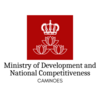 Ministry of Development and National Competitiveness Ministry of Development and National Competitiveness
|
Development Minister |  Maki Zenin MP |
2023-present | Caminoes Social Democrats (CSD) |
 Ministry of Education, Culture, and Sports Ministry of Education, Culture, and Sports
|
Chancellor of Education |  Muldove Kwarteng MP |
2024-present | Caminoes Social Democrats (CSD) |
 Ministry of Health and Humanity Ministry of Health and Humanity
|
Chancellor of Health |  Yūka Moriyama MP |
2024-present | Moderates |
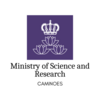 Ministry of Science and Research Ministry of Science and Research
|
Chancellor of Science |  Jorma Sano MP |
2024-present | Caminoes Social Democrats (CSD) |
 Ministry of Justice and Redemption Ministry of Justice and Redemption
|
Chancellor of Justice |  Masahito Fushiguro MP |
2024-present | Green Party |
 Ministry of Defence Ministry of Defence
|
Defence Minister |  Inka Kamikawa MP |
2024-present | Green Party |
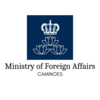 Ministry of Foreign Affairs Ministry of Foreign Affairs
|
Foreign Secretary |  Lorelie Hamada MP |
2024-present | Moderates |
 Ministry of Ecology and Climate Ministry of Ecology and Climate
|
Ecology Minister |  Mariya Takeuchi MP |
2024-present | Green Party |
 Ministry of Agriculture and Food Ministry of Agriculture and Food
|
Chancellor of Agriculture |  Natsuki Fokoyama MP |
2024-present | Green Party |
Political Parties
Political Parties/Coalition Parties in The Caminoes
[[1]]
